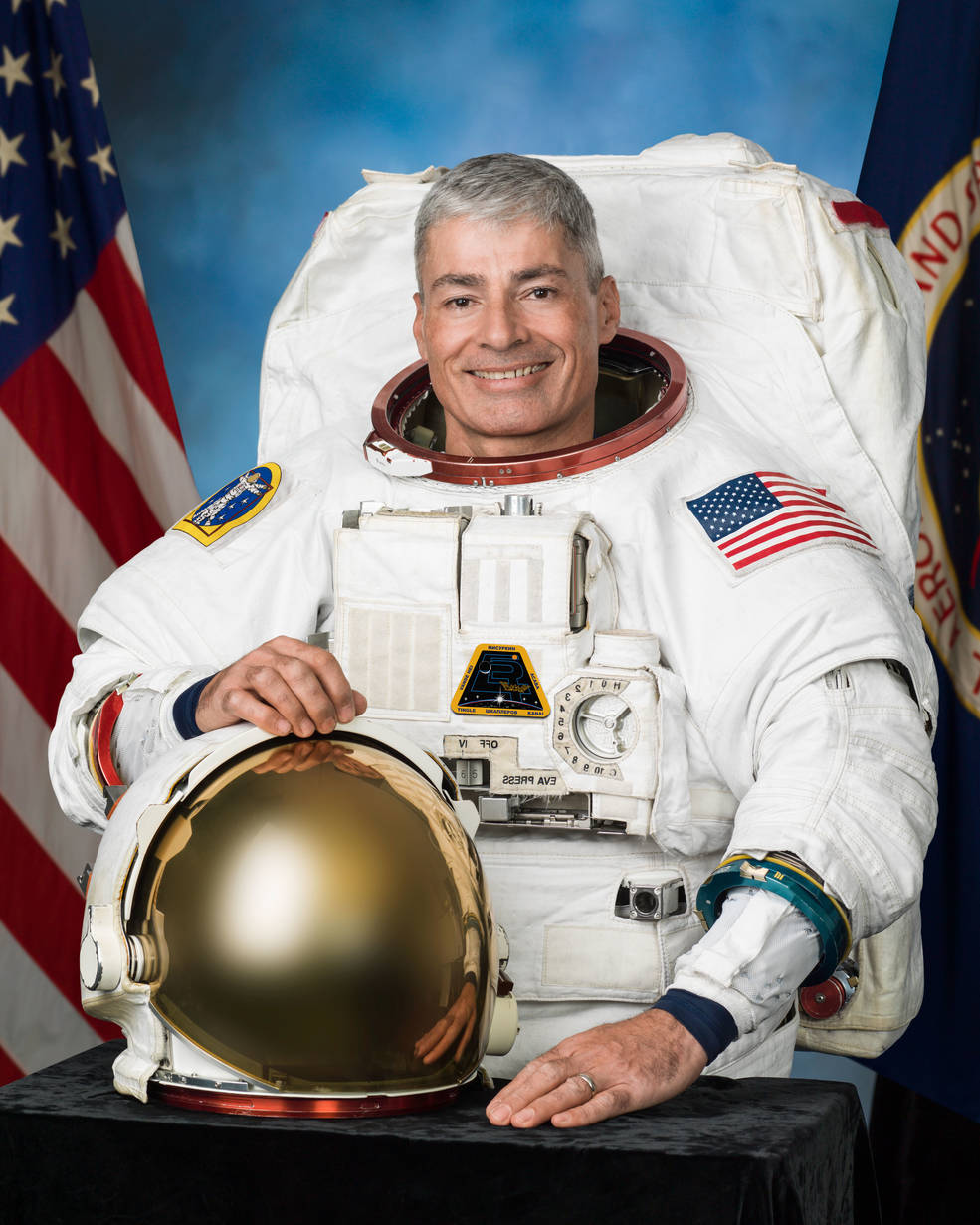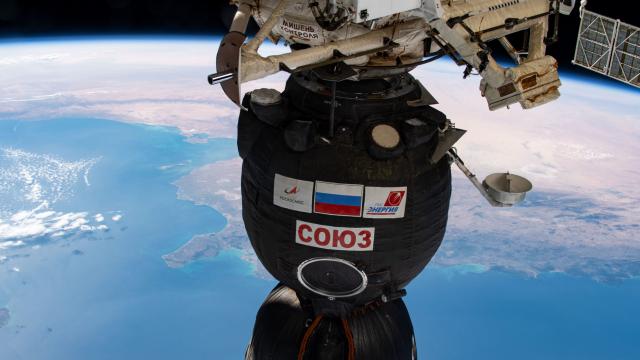An unusual arrangement involving NASA, the Russian space agency, and a commercial intermediary will see an American astronaut fly to the ISS in a cashless exchange meant to preserve a tradition that dates back over 20 years.
NASA normally pays around $US90.25 ($117) million for a seat aboard a Russian Soyuz spacecraft, but the agency is becoming increasingly reluctant to hand over these large sums of money now that its commercial crew program is officially off the ground. That said, NASA did pay that exorbitant fee last October to transport American astronaut Kate Rubins to the space station, in what was speculated to be the last time U.S. taxpayers would pay Russia for trips to space.
NASA once again needs to send an astronaut to space in order to “ensure the agency keeps its commitment for safe operations via a continuous U.S. presence aboard the International Space Station until commercial crew capabilities are routinely available,” as the space agency explains.

Since November 2000, the ISS has hosted at least one American and one Russian at the same time. Not wanting to break that tradition, and to avoid paying Roscosmos its usual flight fee, NASA has entered into a special arrangement with the Russian space agency and Axiom space, a commercial company based in Houston, Texas.
Under the new arrangement, NASA astronaut Mark Vande Hei will join the Soyuz MS-18 mission, scheduled to launch on April 9 from the Baikonur Cosmodrome in Kazakhstan. Vande Hei, along with Russian cosmonauts Oleg Novitskiy and Pyotr Dubrov will join the Expedition 64/65 crew aboard the ISS. In exchange for this, Axiom Space will return the favour by providing a seat for a Russian cosmonaut at some point in 2023.
The current ISS crew will return to Earth in April and May, and the SpaceX Crew-2 mission is scheduled to launch on April 22. By launching Vande Hei a bit earlier, NASA will “ensure continuous presence on the station if the Crew-2 mission launch is delayed or an event occurs while Crew-2 is in-orbit that requires a premature return,” according to the space agency.
NASA has needed Russia to send its astronauts to space ever since the Shuttle was retired in 2011. The agency’s commercial crew program seeks a return of this capacity; SpaceX, with its CrewDragon, has already delivered, but Boeing’s Starliner is woefully behind schedule and beset with problems.
Soyuz MS-18 was supposed to be an all-Russian affair. This late request and resulting arrangement meant a disruption to the Russian mission, meaning that Russian cosmonaut Sergey Korsakov became the odd man out.
“The crew composition change came as a result of an earnest request from the U.S. side,” according to Roscosmos. “NASA voiced its request only in the end of 2020 meaning the Russian side had to change the already confirmed and approved launch program.” To which the agency added: “Roscosmos has taken this decision confirming its adherence to the joint agreements and the spirit of joint usage of the International Space Station.”
In February, NASA publicly announced its desire to hitch a ride aboard the mission and to provide “similar in-kind services” instead of sending its usual wire transfer to Roscosmos.
That something was in the works is not a huge surprise, as training photos of Novitsky and Dubrov showed them wearing a mission patch with Vande Hei’s name on it, as Space Policy Online reports. NASA astronaut Anne McClain will subsequently replace cosmonaut Dmitry Petelin as a backup should Vande Hei not be able to join MS-18 for whatever reason.
[referenced id=”1519765″ url=”https://gizmodo.com.au/2020/10/is-nasa-finally-done-paying-russia-for-trips-to-space/” thumb=”https://gizmodo.com.au/wp-content/uploads/2020/10/15/bof6pq02psqhavzo8spu-300×168.jpg” title=”Is NASA Finally Done Paying Russia for Trips to Space?” excerpt=”NASA just handed over $US90 ($117) million to the Russian space agency for launching astronaut Kate Rubins to the International Space Station. Assuming its commercial partners are able to deliver, this could mark the last time NASA purchases a seat on a Soyuz spacecraft.”]
As noted, the deal is being done through an intermediary, Axiom Space. The private U.S. company is currently building a crew module for the ISS, with plans to eventually launch private astronauts to space. Details of the company’s arrangement with both NASA and Roscosmos have not been disclosed.
Like Roscosmos, Axiom will be expected to arrange for transportation to the ISS and return to Earth, and to provide critical mission support services, such as training, launch preparation, flight operations, and landing rescue services. Since these services were determined to be of “comparable value to both parties,” the contract “contains no exchange of funds,” per NASA. Axiom will probably use a SpaceX CrewDragon for the 2023 mission (the company recently signed an agreement with SpaceX for four launches in 2022).
This is admittedly an odd situation, with NASA obtaining a Soyuz seat through an intermediary, and with the announcement coming so soon before launch. NASA doesn’t want to pay Roscosmos for this service, yet the space agency is clearly not ready to rely exclusively on a sole private partner. It’s a pickle. Given all this, the unusual arrangement is probably not indicative of how things will look moving forward. Indeed, Russia has no real incentive for launching American astronauts at zero cost, even if it means a “free” ride aboard a U.S. vehicle.
As for the upcoming MS-18 mission, the arriving crew will replace American astronaut Kate Rubins and two Russian cosmonauts. Vande Hei will spend six months aboard the ISS, where he will run experiments on cotton root systems, Alzheimer’s disease, and a tech demo of a portable ultrasound device, in addition to contributing to our understanding of how long term microgravity conditions affect the human body. Vande Hei is no stranger to space, having already spent 168 days in space as part of the Expedition 53/54 crew, which he attended from September 2017 to February 2018.
